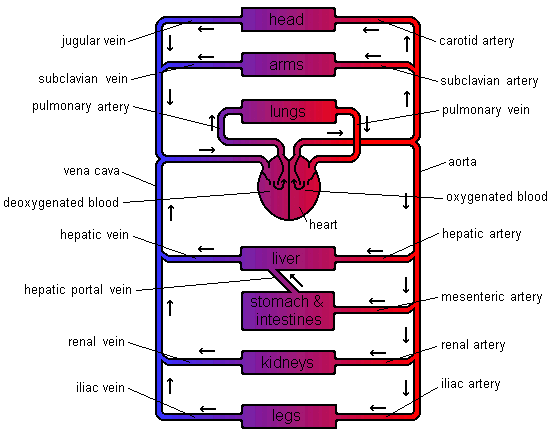Circulatory System
The function of the circulatory system is to transport materials around the body. There are many materials that need transporting. These include oxygen, carbon dioxide, nutrients (such as glucose and amino acids), hormones and waste chemicals such as urea. These substances are transported in a medium called blood through the body through tubes called blood vessels. The blood is forced around these vessels by a pump - the heart.
There are different types of blood vessels.
- Arteries - take blood away from the heart.
- Veins - take blood towards the heart.
- Capillaries - small vessels connecting arteries & veins.
The blood travels around the circulatory system in a series of parallel circuits so that the blood travels from the heart, through an organ before returning to the heart. If the blood went through each organ in turn the organs near the end of the chain would not receive as many nutrients as the organs first in line. This is because the first organs would take out the nutrients leaving fewer for the organs that follow.

There is one exception to this. The blood leaving the stomach & intestines first goes through the liver. The Liver receives its own blood supply, but this second supply gives the liver a chance to absorb any extra nutrients the body needs to store as well as neutralising any toxins that have been absorbed before they can wreak havoc throughout the body.
